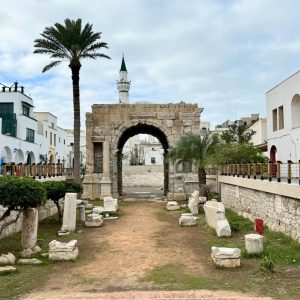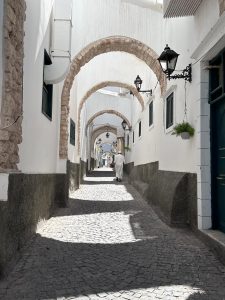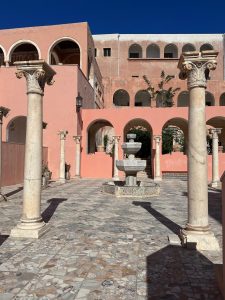Tripoli Libya Tarabulus Oya
Libya’s capital is its most alluring city.
Tripoli which once went by the historical sobriquet of the ‘White Bride of the Mediterranean’ is rich in historical influences and brilliantly captures that irresistible fusion of languid Mediterranean charm and clamorous Mediterranean Medina.
Airport
Mitiga International Airport
History
Tripoli was founded by the Phoenicians around 500 BC. It became one of the four Punic settlements of significance the others being Carthage, Sabratha, and Leptis Magna. Tripoli is Libya’s only ancient city to have been continuously occupied since that time. Following the fall of Carthage in 146 BC, the city came briefly under the jurisdiction of the Nubian kingdom, before becoming a Roman protectorate. Under the Romans, who named the city Qea, Tripoli grew prosperous and, together with Sabratha and Leptis Magna (the other cities of the ‘Tri-polis’ that gave Tripoli its name), provided the Roman Empire with grain, wild animals, and slaves
After the golden age of the 2nd century AD, Qea fell into decline. When the Vandals overran North Africa in the 5th century, the damage to the city was devastating. The conquest by the Byzantines in 533 AD rested the decline, but Tripoli nonetheless spent the following centuries in a much reduced state
The Arab invasion in the 7th century saw a new town, named Tarablus, built among the ruins of the old one. The city grew, and by the 10th century, the Arab geographer Ibn Hawkal described Tripoli as a wealthy and powerful city with a vast market and a busy port. By 1000, Tripoli had become an important center of intercontinental trade between sub-Saharan Africa, southem Europe, Egypt, and the Middle East. It was after the second Arab invasion in 1046 that the old city walls were rebuilt, using Roman remains as foundations. Roman pilasters are still in evidence in parts of the city, most notably at the Roman Column Crossroads
The Arab town flourished in the 14th and 15th centuries. In 1460, Tripoli declared itself an independent city-state. During the 16th century, the city was occupied in quick succession by the Spanish and by the Knights of St. John of Malta. The most visible result of their occupation is the work they carried out on Al-Saraya al-Hamra (Tripoli Red Castle)
The Ottoman Turks occupied Tripoli from 1551. In the centuries that followed, they constructed most of the mosques, hammams (bathhouses), and souqs, visible today defined the boundaries of the old city and laid out the city’s winding lanes. They called the city Tarablus al-Gharb (Tripoli of the West) to distinguish it from the Lebanese city of the same name. By the end of the 17th century, Tripoli was Libya’s only city of size and had over 30,000 inhabitants.
After the Italians invaded in 1911 and conquered Libya, the city burst beyond the confines of the city walls. The Italians built colonnaded streets and numerous public buildings. After WWII many families left the old city to live in the recently vacated Italian apartments and houses.
Must see attractions
- Lose yourself in the narrow lanes of the Medina
- Enjoy a spectacular overview of Libyan history at the National Museum
- Imagine Tripoli’s Roman heyday at the Arch of Marcus Aurelius and explore the magnificent Gurgi Mosque House of Yusuf Karamanli
- Seek out the ornate Italianate façades east of Martyrs square
- Assaraya Alhamra (the Red Castle )
- Shop without hassle in the souqs of the medina






